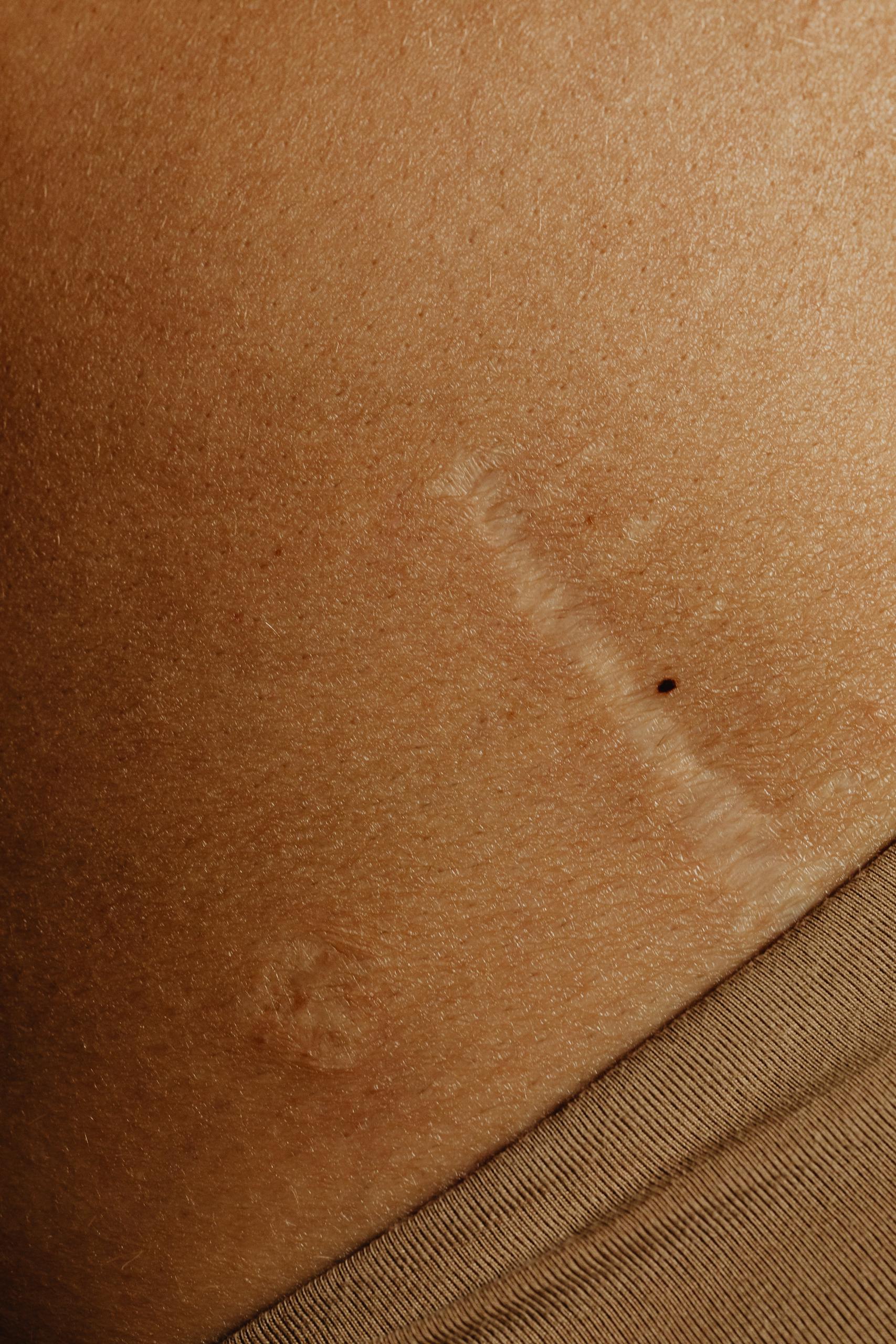How to Release Scar Tissue, Adhesions, and Fascial Tension—Without Force
Fascia is not just a static tissue holding us together—it’s dynamic, responsive, and constantly adapting to its environment. But when scar tissue, adhesions, or general tension build up, they can create restrictions that affect mobility, comfort, and even distant areas of the body.
Let’s explore how to work with your fascia—gently and effectively—to release restrictions, restore flow, and invite your body to let go.
What Happens When Scar Tissue and Adhesions Form?
When you experience an injury or undergo surgery, your body produces scar tissue—a dense network of collagen fibers designed to protect and heal the area. While this is a natural part of the healing process, scar tissue isn’t as flexible as healthy tissue. Over time, it can stick to nearby muscles, nerves, or organs, creating:
- Pulling, pressure, or discomfort around the scar
- Radiating tension in distant areas (e.g., an abdominal scar contributing to back, neck, or jaw tension)
- Restricted mobility and lingering pain
This is why working with scar tissue and fascial adhesions is so important—it’s not just about the site of injury, but how the whole body adapts to it.
Why Force Doesn’t Work on Fascia
Fascia doesn’t respond well to aggressive force. If you try to “break up” or “blast” adhesions, your body may perceive it as a threat, triggering a protective response. Instead of releasing, the tissue tightens up, resisting change.
So, if force doesn’t work…what does?
Fascia responds best to:
- Slow, gentle, sustained pressure
- Deep, mindful breathing
- Presence and awareness
This type of input signals safety to the brain, allowing the fascia to soften and reorganize rather than brace and protect.
How to Gently Release Scar Tissue & Fascial Tension
1. Apply Slow, Sustained Pressure
- Hold gentle pressure on the area using your hands or a soft tool (like an inflatable or foam ball).
- Avoid pain—go for a sensation of stretch, pull, or pressure.
- Stay with the pressure for at least 3 minutes to allow the tissue to shift.
Why this works: Fascia has a property called thixotropy, meaning it becomes more fluid with sustained pressure. Plus, mechanoreceptors (sensory nerve endings) embedded in the fascia send safety signals to the brain, which helps the tissue release.
2. Pair It with Breath
- Breathe deeply and slowly while applying pressure.
- Focus on expanding the area with each inhale and softening with each exhale.
Why this works: Deep breathing generates warmth, which helps “melt” dense, stuck fascia by reorganizing collagen fibers.
3. Stay Present & Listen to Your Body
- Pay attention to sensations.
- Move slowly and intentionally if it feels good—small movements can help free up restrictions.
- Notice any shifts: Does the area soften? Does the tension move or change?
The body speaks through sensation. Tuning in deepens your connection with your body and helps you recognize holding patterns you might not have noticed before.
Try This at Home
If you have a scar, injury, or area of tension, here’s a simple way to explore fascial release:
- Slow down. Find a quiet space where you can relax. Drop into your body.
- Apply gentle pressure. Use your hands or a soft tool to place pressure on the area.
- Hold for ~3 minutes (or longer). Breathe deeply and stay with the sensations.
- Incorporate slow movement if it feels good. Small, subtle movements can enhance release.
- Observe changes. Does the area soften, warm up, or feel more open? Follow the sensations.
A Gentle Approach Leads to Lasting Change
Fascial work isn’t about forcing change—it’s about inviting your body to let go. By working with your body’s natural responses rather than against them, you can ease restrictions, restore mobility, and build a deeper connection with yourself.
Try this process with curiosity rather than the need to “fix” anything. Your body knows how to heal—it just needs the right environment to do so.
If you give this a try, I’d love to hear how it goes for you! Drop a comment or message me with your experience.

